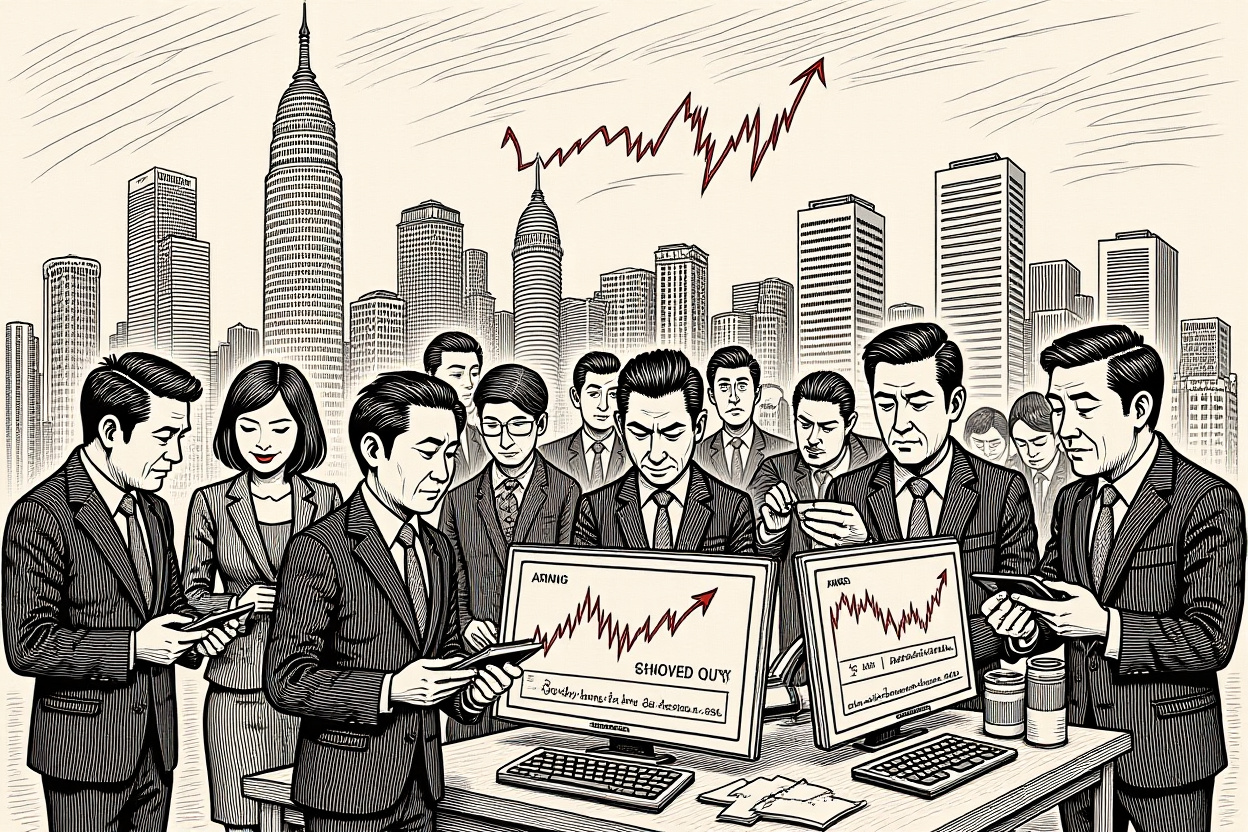Executive Summary
- China’s non-ferrous metals sector has experienced a stealth bull market, with many stocks doubling amid global energy transition demand
- Copper, aluminum, and lithium prices surged due to supply constraints and robust green infrastructure investment
- Policy support from China’s 十四五规划 (14th Five-Year Plan) has accelerated domestic production and technological upgrading
- International investors are increasing exposure to Chinese resource stocks despite lingering regulatory concerns
- Sustainability concerns and price volatility require sophisticated risk management approaches
The non-ferrous metals bull market has quietly delivered exceptional returns while many global investors focused elsewhere. Chinese metals companies have leveraged domestic policy support and international demand trends to achieve remarkable performance, with numerous stocks doubling from their recent lows. This rally combines cyclical recovery patterns with structural shifts in global manufacturing and energy infrastructure.
Market Performance Analysis
China’s non-ferrous metals sector has outperformed broader equity indices by significant margins throughout 2023-2024. The CSI Non-Ferrous Metals Index surged approximately 87% over the past eighteen months, with leading constituents achieving even more impressive gains.
Key Performers and Drivers
江西铜业股份有限公司 (Jiangxi Copper Corporation) appreciated 112% on renewed copper demand from electric vehicle and power infrastructure projects. 中国铝业股份有限公司 (Aluminum Corporation of China) gained 94% as automotive lightweighting and packaging demand accelerated. The non-ferrous metals bull market has been particularly strong in companies connected to energy transition technologies.
Fundamental Drivers of the Rally
Multiple structural factors converged to create ideal conditions for metals appreciation. Global decarbonization initiatives generated unprecedented demand for conductive and battery metals, while supply constraints maintained upward price pressure.
Supply-Demand Dynamics
The International Copper Study Group reported a 42,000-ton market deficit in 2023, with projections widening to 87,000 tons for 2024. Simultaneously, 国家统计局 (National Bureau of Statistics) data showed Chinese refined copper production growing just 3.2% year-over-year against demand growth of 5.7%. This supply-demand mismatch created ideal conditions for the non-ferrous metals bull market to develop.
Policy and Regulatory Environment
Chinese policy makers have actively supported metals sector development through strategic initiatives. The 工业和信息化部 (Ministry of Industry and Information Technology) announced production capacity upgrades worth 人民币 200 billion (RMB 200 billion) across key non-ferrous metals.
Strategic Stockpiling Programs
国家粮食和物资储备局 (National Food and Strategic Reserves Administration) increased strategic purchases of copper, aluminum, and zinc throughout 2023, providing price support during temporary demand softness. These purchases represented approximately 15% of domestic monthly production, creating a stable floor for the non-ferrous metals bull market.
Global Context and International Investment
International investors have increasingly recognized China’s dominant position in metals processing and manufacturing. Foreign ownership of Chinese metals stocks increased from 3.2% to 5.7% of market capitalization during the rally period.
Commodities Supercycle Theory
Many analysts believe the current non-ferrous metals bull market represents the early stages of a broader commodities supercycle. 高盛集团 (Goldman Sachs Group) analysts noted in their recent report that “China’s green infrastructure push could extend metals demand growth for at least a decade.” This perspective has driven increased institutional allocation to the sector.
Risk Factors and Sustainability Concerns
Despite impressive performance, the non-ferrous metals bull market faces significant challenges. Environmental compliance costs have increased following stricter 生态环境部 (Ministry of Ecological Environment) regulations, while price volatility remains elevated.
ESG Considerations
Environmental, social, and governance factors present both challenges and opportunities. Companies that successfully implemented emissions reduction technologies, such as 云南铝业股份有限公司 (Yunnan Aluminium), traded at significant premiums to less compliant competitors. The non-ferrous metals bull market increasingly rewards sustainable production methods.
Investment Strategies and Portfolio Allocation
Sophisticated investors approach the sector through multiple channels, including direct equity exposure, commodities futures, and structured products. Each approach offers different risk-return profiles within the non-ferrous metals bull market.
Sector Rotation Opportunities
Portfolio managers have increased metals allocation from underweight to overweight positions throughout the rally. 中国国际金融股份有限公司 (China International Capital Corporation Limited) research suggests optimal allocation ranges between 8-12% for materials sectors in emerging market portfolios during commodities cycles.
The non-ferrous metals bull market represents a convergence of macroeconomic trends, policy support, and technological transformation. While prices have already appreciated significantly, structural demand drivers suggest continued strength, particularly for metals connected to electrification and energy transition. Investors should maintain exposure but implement rigorous risk management protocols given the sector’s inherent volatility. Monitoring 上海期货交易所 (Shanghai Futures Exchange) warehouse data and 国务院 (State Council) policy announcements provides early indicators for position adjustments.




